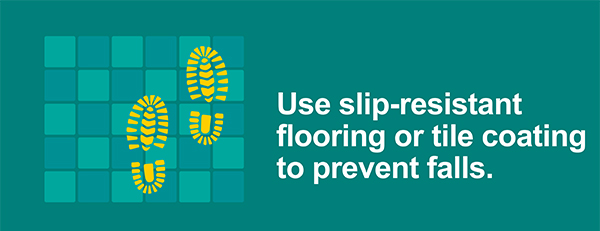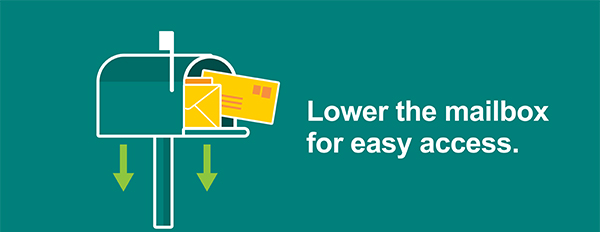ADP (Assistive Device Program)
ODSP (Ontario Disability Support Program)
MOD (March of Dimes)
IFHP (Interim Federal Health Program)
VAC (Veterans Affairs Canada)
Easter Seals Canada
MS Society of Canada
WSIB (Workplace Safety & Insurance Board)
ALS Canada
March of Dimes Funding
March of Dimes Funding Program
Introduction:
The March of Dimes Home and Vehicle Modification Program (HVMP) provides financial assistance to individuals with disabilities, helping them access home and vehicle modifications that improve mobility and independence. Funding is based on eligibility, need, and available resources.
Key Notes:
- Funding is not guaranteed and depends on eligibility and available funds.
- Costs incurred before program approval will not be reimbursed.
- Applications are prioritized based on assessed needs.
Application Types
- Home Adaptations and Devices
- Home Modifications (Construction)
- Vehicle Modifications
1. Home Adaptations and Devices
Eligible:
- Mobility aids for daily living (e.g., lifts, environmental controls)
- Repairs to non-warranty equipment
- Modular ramps, stairlifts, ceiling track lifts, tub cut-outs
Ineligible:
- Concrete ramps, hospital beds, suction grab bars
- Walk-in tubs, self-install stairlifts, household appliances
- Therapeutic items (e.g., pools, exercise bikes)
Required Documents:
- Application form, proof of income, OT assessment, price quote
2. Home Modifications (Construction)
Eligible:
- Door widening, sliding doors
- Kitchen adaptations (e.g., lowering counters)
- Accessibility-focused bathroom renovations (e.g., zero-threshold showers, grab bars)
Ineligible:
- Cosmetic upgrades, additional rooms, suction grab bars
- Walk-in tubs, newly built homes
Note: Homeowners are responsible for structural issues (e.g., mold, plumbing).
FUNDING CRITERIA
HVMP – Eligibility Criteria
- Be a permanent Ontario Resident. Temporary residents and visitors (e.g. tourists, students, foreign workers on a work permit, etc.) are not eligible.
- Be in financial need, income of under $60,000
- Under 18 is the Applicant’s Parent(s)/Guardian(s)’ combined income
- Over the age of 18 is the Applicant and Applicant’s Spouse/Life Partner’s combined income
- Applicants (and their spouses / life partners/ guardians if applicable) with an annual income over $35,000 are required to contribute towards the cost of the modification(s).
- Have a permanent ongoing or recurring disability that impedes mobility and results in substantial restrictions in activities of daily living (eating, bathing, toileting, transferring, and mobility) and/or getting in and out of your home to access essential medical care or community services
- (For Construction Projects Only) be a homeowner who meets the program eligibility criteria who is applying for a modification to their home or be a homeowner who is applying for a modification to their home on behalf of a family member who meets the program eligibility criteria.
- If you are a homeowner applying on behalf of a family member, you must include written consent for the requested modification(s).
HVMP – FAQ and Resources
Low-Cost or No-Cost Home Modifications
Low-Cost and No-Cost Home Modifications for Seniors and People with a Disability
 Explore the range of low-cost or no-cost home modifications for seniors and people with a disability
Explore the range of low-cost or no-cost home modifications for seniors and people with a disabilityHow to Make Your Home Safe, Comfortable and Accessible For People Of All Ages And Abilities
| Doorways and entrances | Kitchens | Lighting |
| Bathrooms | Outdoor areas | |
| Laundry room | Other modifications |
Doorways and entrances
- Paint the threshold to your house in a contrasting colour as a visual signal to anyone with impaired vision.
- Remove the storm or screen doors to make it easier for someone with arthritis or limited upper body-strength to enter your home.
- Add a doorknob gripper or install a levered handle that can be opened without having to grip or twist the knob too tightly.
- Use swing-away hinges to gain an extra few inches of clearance for a wheelchair or walker.
- Place a bench at the entrance where people can set heavy items or sit down while putting on their shoes.
- Remove any unnecessary doors from around the inside your home, so someone using a walker or wheelchair can move around more freely.
- Install a peephole in your front door for extra safety and peace of mind.
Furniture and home layouts
- Remove any clutter or obstacles from the hallways and main rooms.
- Place your furniture to create a clear path of travel throughout your home, with extra manoeuvring space at doorways and the ends of halls.
- Secure or remove any area rugs that someone could trip over.
- Paint floors or doorways between rooms in different colours, to help people with a visual impairment or dementia find their way around.
- Install low-level transition strips between any changes in height or level, or use different floor textures between rooms and at the edges of hallways.
- Get a power bar and cable organizer to keep your television, telephone and other cords safely stored where they can’t trip anyone walking by.
- Place the television where it will have the least amount of glare.
- Put corner guards on the sharp edges of tables, chairs and other furniture.
- Place elevated risers under beds or chairs to help anyone who has trouble sitting or rising from a seated position.
Stairs and staircases
- Place a gate at the top of the stairs to protect seniors and small children.
- Install a safety nosing or coloured strips between the treads and risers to make the edges of each step clearly visible.
- Add a small bench or chair on the landing where people can rest or catch their breath.
- Install a decorative post or finial at the beginnings and ends of railings to signal that the stairs are about to end.
- Use strip lighting to make the stairs easier to see and help prevent falls.
Kitchens
- Choose slip-resistant flooring or put a slip-resistant coating over any tiles—available at most hardware stores.
- Install easy-grip D-handles on cabinets and drawers.
- Reverse the swing on the refrigerator door if the access would be easier.
- Get a pot stabilizer to keep pots from spinning while they are being stirred and a kettle tipper to fill or pour water from a kettle with minimal strain.
- Place an anti-fatigue mat on the floor in the prep and cooking areas to make it more comfortable to stand for long periods of time.
- Add a shelf between the counter and upper cabinets for accessible storage.
- Install a shallow sink basin that can be used while standing or seated.
- Use a folding, wall-mounted or Murphy bed-style table or counter to create more space for someone using a walker or wheelchair.
Bathrooms

- Label your taps “hot” and “cold” if you have small children or if anyone in your home gets easily confused.
- Add a safety mat and grab bars in the tub.
- Get a raised toilet seat and add a bath seat in the shower to help people who have trouble getting into or out of a seated position.
- Install D-handles on the cabinets and drawers to make them easier to open.
- Get an accordion-style mirror for anyone with a visual impairment.
- Use slip-resistant flooring or coating on the tiles.
- Install a shallow sink that can be used in both standing and seated positions.
- Use a medication organizer to make sure the proper doses are taken.
- Purchase a water alarm to alert you if the tub or sink is overflowing.
Laundry room
- Add stickers or marks on the washer and dryer settings to make them easier to see, or as a reminder for someone with memory issues or dementia.
- Use detergent dispensers that don’t have to be lifted off the shelf.
- Use a wheeled laundry cart to eliminate any heavy lifting.
Lighting

- Add extra lamps throughout your home, and use task lighting to help seniors or someone with a visual impairment see what they’re doing.
- Choose light switches in a contrasting colour to make them easier to find.
- Use a night light to help prevent falls or confusion.
- Install a motion detector to make it easier for anyone who has trouble using a light switch to turn the lights on.
- Use a timer to turn lights on or off automatically for added comfort and safety.
- Install motion-detecting lights at the entrance to your house to light your way home after dark and discourage would-be intruders.
Outdoor areas

- Lower the mailbox for easy access without stretching or straining.
- Add large, well-lit house numbers to make it easier to find your home.
- Use paint, LED strip lights or solar lamps to mark outdoor pathways and stairs and make them more visible at night.
Other modifications
- Use low-glare paint to identify important areas in your home or to make the transitions between different rooms and levels more visible.
- Make sure there’s a phone on every level of your home that can be reached without having to go up or down any stairs.
- Install a bed rail to help seniors or someone with a disability sit up, stand, change their position in bed or transfer to a chair or wheelchair.
- Reduce or eliminate the number of toxic chemicals you use in your home.
- Install smoke and carbon monoxide detectors on every level of your house, and test them regularly to be sure they’re
Other Home and Vehicle Modification Programs
List of Government, Volunteer and Charitable Organizations
Additional Resources by Province:
-
Vancouver Foundation
-
Disability Support Program (Modifications to Home/Vehicle)









